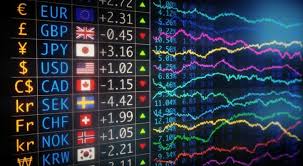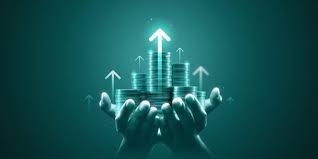- No Products In The Cart
- start shopping
The Future of Forex Unleashing the Power of Robot Trading 1754929532

In the rapidly evolving world of finance, the term robot trading forex FX Trading Broker has become synonymous with innovation and transformation. Among the most significant advancements in recent years is the rise of automated or robot trading systems in the forex market. These systems are revolutionizing trading strategies, enabling traders to execute complex algorithms that can analyze vast amounts of data at incredible speeds. In this article, we will delve into the mechanics of robot trading, its advantages, and the potential challenges it brings to both novice and experienced traders alike.
What is Robot Trading?
Robot trading, often referred to as algorithmic or automated trading, involves using computer programs to execute trades on behalf of the trader. These programs rely on mathematical models and predefined criteria to make trading decisions. By analyzing market data and trends, robot trading systems strive to identify lucrative trading opportunities with minimal human intervention.
The Mechanics Behind Robot Trading
Robot trading systems utilize a variety of algorithms to interpret market conditions. They can integrate technical analysis, fundamental analysis, and even sentiment analysis to determine the optimal time to buy or sell currency pairs. Key components include:
- Data Analysis: Robots analyze historical data and current market conditions to predict price movements.
- Backtesting: Many systems allow traders to test their algorithms against historical data to assess the effectiveness of their strategy.
- Execution: Once criteria are met, robots automatically execute trades, ensuring operations occur at the ideal market moment.
Advantages of Robot Trading

Robot trading offers numerous benefits that appeal to traders of all experience levels. Some of the most notable advantages include:
- Speed: Robots can analyze data and execute trades within milliseconds, a feat that would be impossible for a human trader.
- Emotion-Free Trading: Automated trading removes emotional decision-making, which is often a significant hindrance in trading success.
- Consistency: Robots consistently follow their programmed strategy without deviation, maintaining discipline even during volatile market conditions.
- 24/7 Trading: Forex markets operate around the clock, and robots can monitor and trade without needing rest, effectively leveraging every market opportunity.
Types of Robot Trading Systems
There are various types of robot trading systems available, each catering to different trading styles and strategies:
- Trend-Following Robots: These robots identify and trade in the direction of prevailing market trends, aiming to capture profits from sustained movements.
- Scalping Robots: Designed for quick trades, scalping robots execute numerous transactions in short time frames to capitalize on minor price changes.
- Arbitrage Robots: These systems exploit price discrepancies between different markets or instruments, allowing traders to profit from slight variations.
- News-Based Robots: These algorithms are programmed to trade based on news events and economic releases, which often create significant market volatility.
Choosing the Right Robot Trading System
With so many options available, selecting the right robot trading system can be daunting. Here are some factors to consider:
- Performance History: Review the robot’s past performance, preferably over various market conditions, to assess its reliability.
- User Reviews: Feedback from other traders can provide insights into the robot’s effectiveness and reliability.
- Flexibility: A good trading robot should allow for customization to fit the trader’s personal strategy and risk tolerance.
- Support and Updates: Ensure that the robot provider offers sufficient support and regularly updates their software to adapt to changing market conditions.
Challenges of Robot Trading
Despite its many benefits, robot trading is not without challenges:
- Market Risks: Although robots can manage trades quickly, they are still susceptible to unexpected market shifts and events.
- Dependence on Technology: A technical failure or software bug can lead to significant losses if not monitored closely.
- Lack of Human Insight: While robots are efficient, they cannot replace the human ability to interpret complex market scenarios that may not be easily quantifiable.
The Future of Robot Trading in Forex
The rapid advancement of artificial intelligence and machine learning is set to further refine robot trading capabilities. These technologies can enhance data analysis, allowing robots to adapt to changing market conditions with greater accuracy. Additionally, the integration of big data analytics will enable robots to process an even wider range of data sources, including social media sentiment, geopolitical events, and economic indicators.
Conclusion
Robot trading in forex represents a transformative leap in trading methodologies. By harnessing the power of automation, traders can achieve greater efficiency, consistency, and responsiveness in their strategies. However, it is essential to approach this technology with a clear understanding of both its advantages and limitations. With careful selection and monitoring, traders can leverage robot trading to enhance their performance and navigate the complexities of the forex market.

